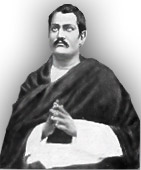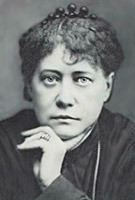 One can never forget the inviolable truth, that a host of reformers and social organizations like the Brahmo Samaj, the Prarthana Samaj , the Arya Samaj , and the Theosophical Society together tried to inculcate the awareness in the mass for the necessity of the female education. Indeed, this spirit of resurgence was one of the salient features of the Bengal Renaissance.
One can never forget the inviolable truth, that a host of reformers and social organizations like the Brahmo Samaj, the Prarthana Samaj , the Arya Samaj , and the Theosophical Society together tried to inculcate the awareness in the mass for the necessity of the female education. Indeed, this spirit of resurgence was one of the salient features of the Bengal Renaissance.
The desire of many Indians of the elite section of the society to learn English , was the motivational force behind the establishment of the Hindu College in 1817. Men like Radhakanta Deb, Rammohan Roy, Babu Buddinath Mukherjee were involved into this joint-venture with Western pillars of support suchas David Hare and Sir Edward Hyde East, Chief Justice of the Supreme Court .
Hindu College was succeeded by the growth of the Calcutta School Society to propagate female education. Radhakanta Deb, a member of the administrative body of this society, encouraged female education. Under his patronage , the Calcutta Female Society, came into being in 1819. He was aided by the Christian Missionary organization, the Baptists.
Miss Mary Cooke, a western philanthropic mind, came down to Kolkata in 1821, being beckoned by the School Society. Her assignment was to collect funds and set up schools. Mary Cooke allied with the Church Missionary Society and gave shape to thirty schools for "respectable" Hindu girls.
These schools flourished because of the Hindu social enthusiasts. Brahmin scholars emerged to be the faculty of these educational institutions.
The Bethune School, owing its origin to the contribution of the British reformer, J.E.Drinkwater Bethune, reached the acme of perfection under the extraordinary guidance of the outstanding man of letters, Pundit Vidyasagar. The Bengali Medium School imparted secular education . The hallmark was that even the "lowest class" girls could access knowledge in this school.
By 1854, there were probably 626 girls` schools all over India. The total population of girls-students amounted to 21,755 . As per as the statistics reveal, Bengal was the leading female literate state of the then India, with 228 students . Next, was Madras with a count of 256. Bombay had a small number of only 65, while North West Frontier and the Oudh, could project the handful amount of 17.
The concerned institutions were invested with diminutive infrastructure. It should be noted, that although people by that time had started harbouring consent for female education, the larger part of the female community could not avail of the light of education, due to restrictions.
The British`s assertion of the "woman question", enlightened society with the fundamental rights of women.. The outcome was the influence of this question on the Indian intelligentsia.
The inspired Hindu college Foundation Committee and the Hindu College graduates, were eager to enjoy the boon of modernization, and to go ahead of their times, by circulating education among women. They understood that an educated woman can expertly handle individual and social matters and can partake of the responsibilities of life with her spouse, efficiently. This ideology probably worked behind the growing demand for educated brides as the right choice. The situation became conducive for the social-correctors to launch their new plans.
 Keshab Chandra Sen, the new generation reformer of the Brahma Samaj , founded by Raja Rammohan , conducted the first Brahmo widow-remarriage in August 1862. His prime objective was the spread of female education. To take care of this major aspect of his projects, he built his Brahma Bandhu Sabha in 1863. He offered immense support to the arrangers of the Bamabodhini Sabha and Bamabodhini Patrika and directed the Bama Hitaisini Sabha (1871) on the route of the moral and material betterment of the wretched feminine group of society.
Finally, the Brahmika Samaj in was raised 1865, as the platform for women to share and enhance their religious knowledge, lessons on the art of stitching, and discourse on social affairs.
Keshab Chandra Sen, the new generation reformer of the Brahma Samaj , founded by Raja Rammohan , conducted the first Brahmo widow-remarriage in August 1862. His prime objective was the spread of female education. To take care of this major aspect of his projects, he built his Brahma Bandhu Sabha in 1863. He offered immense support to the arrangers of the Bamabodhini Sabha and Bamabodhini Patrika and directed the Bama Hitaisini Sabha (1871) on the route of the moral and material betterment of the wretched feminine group of society.
Finally, the Brahmika Samaj in was raised 1865, as the platform for women to share and enhance their religious knowledge, lessons on the art of stitching, and discourse on social affairs.
However, the sensitive issue of women`s well-being caused a rift among the members of the Brahmo Samaj in 1866. Keshabchandra Sen, distanced himself from the mainstream activities of the Adi Brahma Samaj, supervised by Debendranath Tagore. Keshab formed his own organization called the Navabidhan. He invited Miss Mary Carpenter to Calcutta, to aid him in his mission of female learning. The deficiency of competent teachers attracted her attention. To attain a solution , she made several propositions before the then Governor-General . This facilitated the spawning of the National Indian Association to usher in a reconciliation between the British authority and the native Indians, with regard to the course of actions to be followed.
Dr. Atmaram Pandurang(1823-1898), enthralled by the motivational activities of Keshub Chandra Sen`s Brahmo Samaj, created the Prarthana Samaj in Bombay, or present Mumbai. Prarthana Samaj extended its helping hand to women`s education. Arrangements of free libraries and classes were the immediate steps taken. Women and students` associations, continued their social revolution in an ordered manner.
In 1871 Carpenter, Keshub Sen, and another English woman, Annette Akroyd, together started a school. But schism in principles sprouted, and Akryod, joined the Sadharan Brahmo Samaj to open the Hindu Mahila Vidyalaya (Hindu Girls` School). Personalities like Brajakishore Basu, Shivanath Shastri, Durga Mohan Das, Dwarkanath Ganguly were the gems of this reputed group. In 1878 this school converged with the Bethune School to turn into Bethune College, affiliated to the educational authority of the Calcutta University. Bethune College provided opportunity to the pride of Indian womanhood, the first female graduates, Kadambini Basu and Chandramukhi Basu. These brilliant women obtained their Bachelors Degree from Bethune College. Kadambani Bose (Kadambini Ganguly, after marriage to the great emancipator, Dwarkanath Ganguly), pursued higher education, and emerged to be the first lady doctor of the nation.
In Madras,it was the diligent Annie Besant and her Theosophical Society, which proclaimed aloud, the significance of female learning. Annie, a self-independent women was very much vocal, about the early Vedic society, when education and free mobility of women, in the spheres of society was the order of the day.asserted that in ancient limes Hindu women were educated and moved freely in society. She aimed at a revival of this "golden age". Besant`s campaign for women`s sufferage in 1874, her demonstration of "New Unionism" in her crusade against the misery of the London match-stick factory-girls in 1888, had already won her international acclaim as the Feminist freedom-fighter.
 Madame Blavatsky , one of the founders of the Theosophical Society, strongly condemned child marriage, child widowhood, as abominable perverted practice of Hindu beliefs. Besant adored Blavatsky as her ideal, and stressed her views in the article "Education of Women" in the Indian Ladies Magazine . Besant opined that India would degenerate into a future of bleakness and nothingness, if women remains in ignorance. She modelled Indian womanhood on the iconic female figure of the Goddess Durga. Her ardent fervour got its manifestation in the women`s college, that sprung as per as her principles.pledged her efforts to this reform and founded a women`s college based on these principles.
Madame Blavatsky , one of the founders of the Theosophical Society, strongly condemned child marriage, child widowhood, as abominable perverted practice of Hindu beliefs. Besant adored Blavatsky as her ideal, and stressed her views in the article "Education of Women" in the Indian Ladies Magazine . Besant opined that India would degenerate into a future of bleakness and nothingness, if women remains in ignorance. She modelled Indian womanhood on the iconic female figure of the Goddess Durga. Her ardent fervour got its manifestation in the women`s college, that sprung as per as her principles.pledged her efforts to this reform and founded a women`s college based on these principles.
Arya Samaj directed the course of female education in North India . Its chief was the visionary Swami Dayanand Saraswati. Towards the close of the nineteenth century, the broad-minded Arya Samajists realized the necessity of incorporating female participation in the grave task of reforms. An allied body to the Arya Samaj the Jullundar Samaj inaugurated the Arya Kanya Pathshala (Girls` School) in 1890 with a lady principal to regulate the work-process.It was succeded by the making of the Kanya Mahavidyalaya (Girls` Higher School) of Jullundar . The dormant structures of these academic centers and the elementary girls` school, were cemented into conspicuous learning-sites in 1892 , by the benevolent Lala Devraj.
Lala Devraj, was that true Karma Yogi or selfless worker who gave space for the growth of girls` school in his family abode. We are bound to salute him with respect , when we discover that this salvager used to sell "waste paper " to collect money, for running the school. Even the food that he used to provide to the instructors, working in the school, was prepared by the equally devoted mother of Lala Devraj. Slowly with time, more and more people started responding to the upheavel of women`s improvement. And this premier institution "became a catalyst for various kinds of change relating to women in [the] Punjab."
Meanwhile, Vidyasagar opened up 30 schools in Bengal, for diffusing the perfume of female education, in all the corners of Bengal.
One must understand that this rising cult of feminity, was a vital aspect of Indian nationalist ideology during the freedom struggle. Had India not been able to honour her womanhood, then how would have the concept of Bharatmata or the MotherIndia, fettered to the shackles of the British, instigated the agitated mass against the foreign colonisers?
Female education flowered under the increasing impetus generated from the widened mental horizon of the indigenous Mahatmas(great souls), committed to the architecture of a new reformed society, which would pay women the respect and freedom they deserve.






































